Key words
|
| |
| Adaptogenic, Holoptelea integrifolia, Withania somnifera, Forced swimming endurance test and Chronic cold restraint stress model. |
| |
INTRODUCTION
|
| |
| According to the report of WHO, approximately 450 million people suffer from mental or behavioural disorders like stress. This amounts to 12.3% of the global burden of disease, and predicted to rise up to 15% by 2020 [1]. It is estimated that 75-90% of visits to primary care physicians are related to stress either acutely or because of chronic problems associated with stress. An October 2008 American Psychological Association (APA) press release on stress in America claims 8 of 10 Americans cite the economy as a significant source of stress, up from 66 percent six months earlier [2]. In June 2008, more people were reporting symptoms associated with stress compared to the previous year, with nearly half polled indicating stress had increased in the past years [2]. Stress basically is a reaction of mind and body against change in homeostasis [3]. The term stress in the classical sense defined by Hans Selye as a state of threatened homeostasis [4]. Exposure to stressful situation is among the most common human experiences [5]. In response to stressor, a series of behavioural, neurochemical and immunological changes occur that ought to serve in an adaptive capacity. If stress increases the organism may become diseased [5]. Stress is one of the basic factors which causes a number of diseases such as atherosclerosis, coronary heart disease, aging and liver disease [6]. |
| |
| Holoptelea integrifolia (Ulmaceae) is also known as Kanju, Banchilla, Chilbil, Begana (Hindi), Rajain, Arjan (Punjabi), Chirabilva (Sanskrit). It is mainly distributed in sub- Himalayas, Ajmer, Bihar, Assam, Burma and Ceylon-Cochin-China [7]. Recently, the activities such as antiviral activity, antioxidant, antimicrobial & wound healing activity and antiemetic activity have been reported in this plant. The leaves and stem bark of this plant were used by traditionally for curing skin diseases; obesity, cancer, and leaves decoction were used in the management of diarrhoea [8]. Withania somnifera is an important medicinal plant, which is used in traditional medicine to cure many diseases commonly known as ashwagandha or Winter cherry belonging to family solanaceae [9, 10]. The roots of the plant are called as rasayanas, a group of plant-derived drugs that promote health by strengthening the defence mechanism of the body against diseases. It has been an important herb in the ayurvedic and indigenous medical systems for over 2500 years. Withania somnifera has been proved to possess adaptogenic activity [11]. An extensive literature survey of all scientific sources revealed that no work has been reported for adaptogenic activity of stem bark of Holoptelea integrifolia. Hence the present study was conducted to compare adaptogenic activity of Holoptelea integrifolia with Withania somnifera. |
| |
MATERIALS AND METHODS
|
| |
|
Plant collection and authentication
|
| |
| The stem bark of Holoptelea integrifolia was procured from Sheikh International, Tamil nadu with reference number TCN/34/2009 and was authenticated by Regional Research Institute, Bangalore with reference number RRI/BNG/SMP/Drug Authentication/2009-10/551. The dried alcoholic root powder extract of Withania somnifera was procured from Ambe Phyto Extracts Pvt. Ltd. (reference number WS/ 015/ 09 along with its chemical of analysis). |
| |
|
Preparation of extract
|
| |
| The stem bark was shade dried, powdered and stored in an air tight container at room temperature. 100 grams of powder was accurately weighed and exhaustively extracted by absolute alcohol using soxhlet apparatus. Then extract was evaporated to dryness [12]. |
| |
| Phytochemical evaluation: Phytochemical evaluation was carried out for all the extracts as per the standard methods. |
| |
| 1. Detection of alkaloids: Extracts were dissolved individually in dilute Hydrochloric acid and filtered. |
| |
| a) Mayer’s Test: Filtrates were treated with Mayer’s reagent (Potassium Mercuric Iodide). Formation of a yellow coloured precipitate indicates the presence of alkaloids. |
| |
| b) Wagner’s Test: Filtrates were treated with Wagner’s reagent (Iodine in Potassium Iodide). Formation of brown/reddish precipitate indicates the presence of alkaloids. |
| |
| c) Dragendroff’s Test: Filtrates were treated with Dragendroff’s reagent (solution of Potassium Bismuth Iodide). Formation of red precipitate indicates the presence of alkaloids. |
| |
| d) Hager’s Test: Filtrates were treated with Hager’s reagent (saturated picric acid solution). Presence of alkaloids confirmed by the formation of yellow coloured precipitate. |
| |
| 2. Detection of carbohydrates: Extracts were dissolved individually in 5 ml distilled water and filtered. The filtrates were used to test for the presence of carbohydrates. |
| |
| a) Molisch’s Test: Filtrates were treated with 2 drops of alcoholic á-naphthol solution in a test tube and conc. Sulphuric acid was added. Formation of the violet ring at the junction indicates the presence of Carbohydrates. |
| |
| b) Benedict’s Test: Filtrates were treated with Benedict’s reagent and heated gently. Orange red precipitate indicates the presence of reducing sugars. |
| |
| c) Fehling’s Test: Filtrates were hydrolysed with dil. HCl, neutralized with alkali and heated with Fehling’s A & B solutions. Formation of red precipitate indicates the presence of reducing sugars. |
| |
| 3. Detection of glycosides: Extracts were hydrolysed with dil. HCl, and then subjected to test for glycosides. |
| |
| a) Modified Borntrager’s Test: Extracts were treated with Ferric Chloride solution and immersed in boiling water for about 5 minutes. The mixture was cooled and extracted with equal volumes of benzene. The benzene layer was separated and treated with ammonia solution. Formation of rose a) Modified Borntrager’s Test: Extracts were treated with Ferric Chloride solution and immersed in boiling water for about 5 minutes. The mixture was cooled and extracted with equal volumes of benzene. The benzene layer was separated and treated with ammonia solution. Formation of rosepink colour in the ammonical layer indicates the presence of anthranol glycosides. |
| |
| b) Legal’s Test: Extracts were treated with sodium nitropruside in pyridine and sodium hydroxide. Formation of pink to blood red colour indicates the presence of cardiac glycosides. |
| |
|
4. Detection of saponins
|
| |
| a) Froth Test: Extracts were diluted with distilled water to 20ml and this was shaken in a graduated cylinder for 15 minutes. Formation of 1 cm layer of foam indicates the presence of saponins. |
| |
| b) Foam Test: 0.5 gm of extract was shaken with 2 ml of water. If foam produced persists for ten minutes it indicates the presence of saponins. |
| |
|
Detection of phytosterols
|
| |
| a) Salkowski’s Test: Extracts were treated with chloroform and filtered. The filtrates were treated with few drops of Conc. Sulphuric acid, shaken and allowed to stand. Appearance of golden yellow colour indicates the presence of triterpenes. |
| |
| b) Libermann Burchard’s test: Extracts were treated with chloroform and filtered. The filtrates were treated with few drops of acetic anhydride, boiled and cooled. Conc. Sulphuric acid was added. Formation of brown ring at the junction indicates the presence of phytosterols. |
| |
|
Detection of phenols
|
| |
| Ferric Chloride Test: Extracts were treated with 3-4 drops of ferric chloride solution. Formation of bluish black colour indicates the presence of phenols. |
| |
| Ferric Chloride Test: Extracts were treated with 3-4 drops of ferric chloride solution. Formation of bluish black colour indicates the presence of phenols. |
| |
|
Detection of tannins
|
| |
| Gelatin Test: To the extract, 1% gelatin solution containing sodium chloride was added. Formation of white precipitate indicates the presence of tannins. |
| |
|
Detection of flavanoids
|
| |
| a) Alkaline Reagent Test: Extracts were treated with 5-6 drops of sodium hydroxide solution. Formation of intense yellow colour, which becomes colourless on addition of dilute acid, indicates the presence of flavonoids. |
| |
| b) Lead acetate Test: Extracts were treated with 5-6 drops of lead acetate solution. Formation of yellow colour precipitate indicates the presence of flavonoids. |
| |
|
Detection of proteins and aminoacids
|
| |
| a) Xanthoproteic Test: The extracts were treated with 4-5 drops of conc. Nitric acid. Formation of yellow colour indicates the presence of proteins. |
| |
| b) Ninhydrin Test: To the extract, 0.25% w/v ninhydrin reagent was added and boiled for few minutes. Formation of blue colour indicates the presence of amino acid. |
| |
|
Detection of diterpenes
|
| |
| Copper acetate Test: Extracts were dissolved in water and treated with 3-4 drops of copper acetate solution. Formation of emerald green colour indicates the presence of diterpenes [13, 14, 15]. |
| |
|
Animals used
|
| |
| The female albino Wister rats having body weight 220-250g were used. The animals were allowed for acclimatization for ten days under laboratory conditions. They were housed in polypropylene cages and maintained at 27 ºC ± 2 ºC, relative humidity 65±10% under 12 hours light/dark cycle. The animals were fed regularly and water ad libidum. The protocol was approved by the Institutional Animal Ethics Committee (IAEC) vide number: 954/ac/06/CPCSEA/09/17. |
| |
|
Adaptogenic activity
|
| |
|
Forced swimming endurance test
|
| |
| Female albino Wister rats were used for forced swim endurance test. The animals were divided in four groups consisting of six animals in each group. Group I was treated with normal saline (0.1 ml/ 100g, p.o.), Group II was taken as standard group and was treated with Withania somnifera (100 mg/kg, p.o.), Group III and IV were taken as test groups and treated with 250 mg/kg and 500 mg/kg, p.o. of the ethanolic extract of Holoptelea integrifolia respectively. The drug treatment was given continuously for seven days (same dose daily). On the 8th day the rats were subjected to swimming stress by keeping them in polypropylene tank of dimension (37× 37× 30 cm), filled with water having temperature 20 ºC to a height of 25 cm. Rats were allowed to swim till complete exhaustion and the end point was taken when animal started drowning. The mean swimming time for each group was calculated. The blood was collected through retro-orbital puncture to estimate biochemical parameters like serum glucose, triglycerides, cholesterol, corticosterone and blood cell count (RBC, WBC and DLC) [14]. |
| |
|
Chronic cold restraint stress
|
| |
| Female albino Wistar rats were used for chronic cold restraint stress. The animals were divided in four groups consisting of six animals in each group. Group I was treated with normal saline (0.1 ml/100 g, p.o.), Group II was taken as standard group treated with Withania somnifera (100 mg/kg, p.o.), Group III and IV were taken as test groups and treated with 250 mg/kg and 500 mg/kg, p.o. of the ethanolic extract of Holoptelea integrifolia respectively. The stress was induced by exposing animals to the temperature 4 ºC for two hours. The animals were taken out from their cages and individually placed in container with partition to separate individual animal. The containers were placed inside refrigerator such that the temperature to which the animals were exposed was 4 ºC. After two hours the animals were returned to their home cages. This procedure continued daily for a period of 10 days. On 11th day blood samples were collected through retro orbital puncturing under light ether anesthesia for estimation various biochemical parameters. The animals were sacrificed by cervical dislocation and weight of adrenals was recorded after washing with alcohol [14, 15, 16]. |
| |
|
Statistical evaluation
|
| |
| The results of each groups were subjected to one-way analysis of variance (ANOVA) followed by Dunnett’s test and P <0.01 was considered significant. |
| |
RESULTS AND DISCUSSION
|
| |
|
Phytochemical screening
|
| |
| Preliminary phytochemical investigations of ethanolic extract of Holoptelea integrifolia (ETHEHI) and ethanolic extract of Withania somnifera (ETHEWS) revealed the presence of alkaloids, flavonoids, tannins, saponins, glycosides, phenols and reducing sugars (Table: 1). |
| |
|
Effect of ethanolic extract of stem bark of Holoptelea integrifolia on swimming endurance time in rats
|
| |
| On 8th day animals of group I, II, III, IV swam for 27.33, 44.83, 37.66, 40.66 mins respectively. When swimming time of group II, III, IV was compared with group I, it showed significant (P< 0.01) rise in the swimming time. 500mg/kg ETHEHI treated animals showed reading very close to 100mg/kg of ETHEWS treated animals. Consequently higher dose of ETHEHI is more potent with respect to lower dose of ETHEHI. Both the doses of Holoptelea integrifolia were able to increase the swimming endurance when compared with animals who received normal saline (Table: 2). |
| |
|
Effect of ethanolic extract of stem bark of Holoptelea integrifolia on biochemical parameters in forced swimming endurance test
|
| |
| On 8th day level of glucose in serum of animals of group I, II, III, IV was found as 95.13, 71.54, 86.26, 82.13mg/dl respectively. The level of glucose was increased during the time of stress but it came down due to pre-treatment of extracts. On the other hand the level of cholesterol in serum (on 8th day) recorded as 97.72, 84.94, 97.08, 89.77 mg/dl respectively. 500mg/kg of ETHEHI showed significant decrease in the level of cholesterol with respect to ETHEWS 100mg/kg dose (Table: 3). |
| |
| The level of triglyceride in serum on 8th day was recorded as 94.38, 70.1, 82.50, 77.87 mg/dl respectively. 500mg/kg of ETHEHI showed significant decrease in the level of triglycerides with respect to ETHEWS. The level of corticosterone in serum (on 8th day) was recorded as 165.74, 106.53, 133.08, 120.80 mg/dl respectively 500mg/kg of ETHEHI showed significant decrease in the level of corticosterone (Table: 3). |
| |
| So all these biochemical parameters were found to be increased in forced swimming stress in the animals of group I treated with 0.1ml/100g of normal saline. On the other hand these values decreased significantly on pre-treatment with ETHEWS and ETHEHI. 500mg/kg dose of ETHEHI reduced the level of glucose, cholesterol, triglycerides and corticosterone with respect to 250mg/kg dose of ETHEHI. On the other hand 500mg/kg dose of ETHEHI had significant (P< 0.01) adaptogenic effect but less potent than ETHEWS when compared with group I (Table: 3). |
| |
|
Effect of Ethanolic extract of stem bark of Holoptelea integrifolia on Haematological parameters
|
| |
| On 8th day RBC count of animals of group I, II, III, IV was found as 3.78, 3.10, 3.30, 3.28 millions/cumm respectively. The RBC count of group II, III, IV with respect to group I reduced due to pre-treatment of extracts. On the other hand WBC count of animals of group I, II, III, IV was found as 12250, 10017, 11333, 10600 cells/cumm respectively. The WBC count of II, III, IV group reduced due to pre-treatment of extracts. The neutrophyllus count of animals of group I, II, III, IV was as found 2884, 2358, 2669, 2496 cells/cumm respectively. |
| |
| The neutrophyllus count of II, III, IV groups reduced due to pre-treatment of extracts with respect to group I. The lymphocytes count of animals of group I, II, III, IV was found as 9187.5, 7514, 8500, 7966.7 cells/cumm respectively. The lymphocyte count of groups II, III, IV reduced due to pre-treatment of extracts with respect to group I. The Eiocinnophyllus count of animals of group I, II, III, IV was found as 177.5, 140.1, 164, 136.6 cells/cumm respectively. The eiocinnophyllus count of groups II, III, IV reduced due to pre-treatment of extracts with respect to group I. |
| |
| The Monocyte count of animals of group I, II, III, IV was found as 12, 10, 12, 11 cells/cumm respectively. The monocyte count of groups II, III, IV reduced due to pre-treatment of extracts with respect to group I (Table: 4). |
| |
| Consequently forced swimming endurance test significantly altered the haematological parameters i.e., increased RBC, WBC and DLC counts. Pretreatment with ETHEWS, ETHEHI significantly (P< 0.01) inhibited the stress induced changes in these parameters except monocyte (Table: 4). On the other hand these values also express that higher dose of ETHEHI was very effective, but both the doses of test drug had shown significant adaptogenic activity. |
| |
|
Effect of ethanolic extract of stem bark of Holoptelea integrifolia on biochemical parameters
|
| |
| On 10th day level of glucose in serum of animals of group I, II, III, IV was found as 121.59, 95.15, 109.23, 98.43 mg/dl respectively. The level of glucose was increased during the time of stress. But it came down due to pre-treatment of extract. The level of cholesterol in serum on 10th day was recorded as 162.25, 97.07, 149.59, 103.42 mg/dl respectively. 500mg/kg of ETHEHI showed very closer significant decrease in the level of cholesterol with respect to ETHEWS 100mg/kg dose. On the other hand the level of triglyceride in serum on 10th day was recorded as 96.23, 66.76, 82.31, 75.28 mg/dl respectively. 500mg/kg of ETHEHI showed very closer significant decrease in the level of triglycerides with respect to ETHEWS. The level of corticosterone in serum on 10th day was recorded as 159.52, 104.80, 137.76, 123.11 mg/dl respectively (Table: 5). 500mg/kg of ETHEHI showed very closer significant decrease in the level of corticosterone. So all these biochemical parameters were found to be increased in chronic cold restraint stress in the animals of group I treated with 0.1ml/100g of normal saline. On the other hand these values decreased significantly on pre-treatment with ETHEWS and ETHEHI. |
| |
| 500mg/kg dose of ETHEHI reduced the level of glucose, cholesterol, triglycerides and corticosterone with respect to 250mg/kg dose of ETHEHI. On the other hand 500mg/kg dose of ETHEHI had significant ( P< 0.01) adaptogenic effect, but was less potent than ETHEWS when compared with group I (Table: 5). |
| |
|
Effect of ethanolic extract of stem bark of Holoptelea integrifolia on organ weights
|
| |
| On 10th day the weight of liver of animals of group I, II, III, IV was found as 5.83, 4.15, 4.39, 4.20g/100g body weight respectively. The weight of adrenal of animals of group I, II, III, IV was found as 11.59, 7.85, 10.33, 8.33mg/100g body weight respectively on 10th day. Due to stress the weight of adrenal increased in group I increased but it decreased in group II, III and IV due to pre-treatment of extract. On 10th day the weight of spleen of animals of group I, II, III, IV was found as 0.128, 0.230, 0.182, 0.198mg/100g body weight respectively. Due to stress the weight of spleen decreased in group I but it increased in group II, III and IV due to pre-treatment of extract (Table: 6). |
| |
|
Effect of Holoptelea integrifolia stem bark on Haematological parameters
|
| |
| On 10th day RBC count of animals of group I, II, III, IV was found as 3.90, 3.28, 3.45, 3.38 millions/cumm respectively. The RBC count of group II, III, IV with respect to group I reduced due to pretreatment of extracts. The WBC count of animals of group I, II, III, IV was found as 12500, 10073, 11333, 10433 cells/cumm respectively. The WBC count of II,c III, and IV group reduced due to pre-treatment of extracts. |
| |
| On the other hand the neutrophyllus count of animals of group I, II, III, IV was as found 4689.3, 2758.8, 3920.3, 3263.5 cells/cumm respectively. The neutrophyllus count of II, III, IV groups reduced due to pre-treatment of extracts with respect to group I. The lymphocytes count of animals of group I, II, III, IV was found as 7499.2, 6996.5, 7148.5, 7013.5 cells/cumm respectively. The lymphocyte count of groups II, III, IV reduced due to pre-treatment of extracts with respect to group I. The eiocinnophyllus count of animals of group I, II, III, IV was found as 293.17, 150.83, 185, 158 cells/cumm respectively. The eiocinnophyllus count of groups II, III, IV reduced due to pre-treatment of extracts with respect to group I. The Monocyte count of animals of group I, II, III, IV was found as 18.33, 15.16, 16.16, 15.33 cells/cumm respectively. The monocyte count of groups II, III, IV reduced due to pre-treatment of extracts with respect to group I. |
| |
| Consequently chronic cold restraint stress significantly altered the haematological parameters i.e., increased RBC, WBC and DLC counts. Pretreatment with ETHEWS, ETHEHI significantly (P<0.01) inhibited the stress induced changes in these parameters (Table: 7). On the other hand these values also express that higher dose of ETHEHI was very effective, but both the doses of test drug had shown significant adaptogenic activity. |
| |
DISCUSSION
|
| |
| The present study compared the ability of the ethanolic extract of Holoptelea integrifolia and ethanolic extract of Withania somnifera to confirm the adaptogenic activity by forced swimming endurance test and chronic cold restraint stress. Forced swimming stress involves physical exercise and psychological stress which results in increased in serum corticosterone level, while cold stress is of psychogenic type only [17]. Response to stress is highly contradictory with regard to blood sugar levels. Studies related to stress in rats show fluctuation in blood sugar levels ranging from initially a slight decrease followed by relative increase and further no changes in blood sugar levels [18]. A significant hyperglycaemia in both forced swimming endurance test and cold restraint stress model was observed. Under stressful conditions corticosterone in rats will be secreted by adrenal cortex. Hyper secretion of corticosterone helps in maintenance of internal homeostasis through the process of gluconeogenasis [19]. Treatment with ethanolic extracts of stem bark of Holoptelea integrifolia significantly reduced the forced swimming and cold stress related hyperglycemias may be by reducing the hyper activity of adrenal cortex and also by maintenance of homeostatic mechanism. This was confirmed with serum corticosterone level observation after forced swimming test. |
| |
| The mechanism by which stress raises serum cholesterol is likely to be related to the enhanced activity of hypothalamic- pituitary axis resulting in increased liberation of catecholamine and corticosteroids [20]. The present work showed a significant increase in serum corticosterone was observed in forced swimming stress as well as in chronic cold restraint stress. After treatment with ethanolic extracts of Withania somnifera and Holoptelea integrifolia, it was reduced significantly in both the models. Similarly cholesterol level during swim stress and cold stress gets increased, which significantly was reduced in ethanolic extracts of Withania somnifera and Holoptelea integrifolia (only in 500mg/kg dose). |
| |
| The effect of stress on serum triglycerides has been shown to be variables probably catecholamine mobilise lipids from adipose tissues. In the present study, both forced swimming endurance test and cold restraint stress models showed an increase in triglyceride levels. Pre-treatment with ethanolic extracts of Withania somnifera and Holoptelea integrifolia significantly reduced the triglyceride level in both the animal models. |
| |
| The weights of organs like adrenal gland, liver were taken in cold restraint stress model, which were increased than control group. Stress induces adrenomedullary response to release adrenaline which in turn stimulatesβ2 receptors on the pituitary gland. It leads to greater release of ACTH that can stimulate the adrenal medulla as well as cortex resulting in further release of adrenaline and increase in weight of adrenal gland to greater extent [19]. Corticosterone increases m-RNA levels in liver cells, since the protein required for repair of wear and tear in swimming stress is more along with higher metabolic changes too that leads to show a significant increase in liver weight and it was well in correlation with the observed increase in serum corticosterone level. Spleen contracts during stress and releases more amount of blood (RBC) into circulation, hence its weight decreases. |
| |
| Pre-treatment with ethanolic extracts of Withania somnifera and Holoptelea integrifolia prevented the stress induced increase in weight of liver and adrenal glands and a decrease in spleen weight indicating their protective effect against stress. Stress also causes alteration in haematological parameters like increase in RBC, WBC and DLC counts, Pretreatment with ethanolic extract of Withania somnifera and Holoptelea integrifolia reduced the haematological parameters significantly except monocyte in forced swimming endurance test. There is no significant change in WBC, neutrophyllus, eiocinnophyllus in ethanolic extract of Holoptelea integrifolia (250mg/kg) in forced swimming endurance test. In cold restraint stress model pretreatment with ethanolic extract of Withania somnifera and Holoptelea integrifolia significantly reduces blood cell counts except lymphocytes in Holoptelea integrifolia (250mg/ kg). |
| |
Conflict of Interest
|
| |
| NIL |
| |
Source of Support
|
| |
| NONE |
| |
Tables at a glance
|
 |
 |
 |
 |
| Table 1 |
Table 2 |
Table 3 |
Table 4 |
|
| |
|
|
| |
Figures at a glance
|
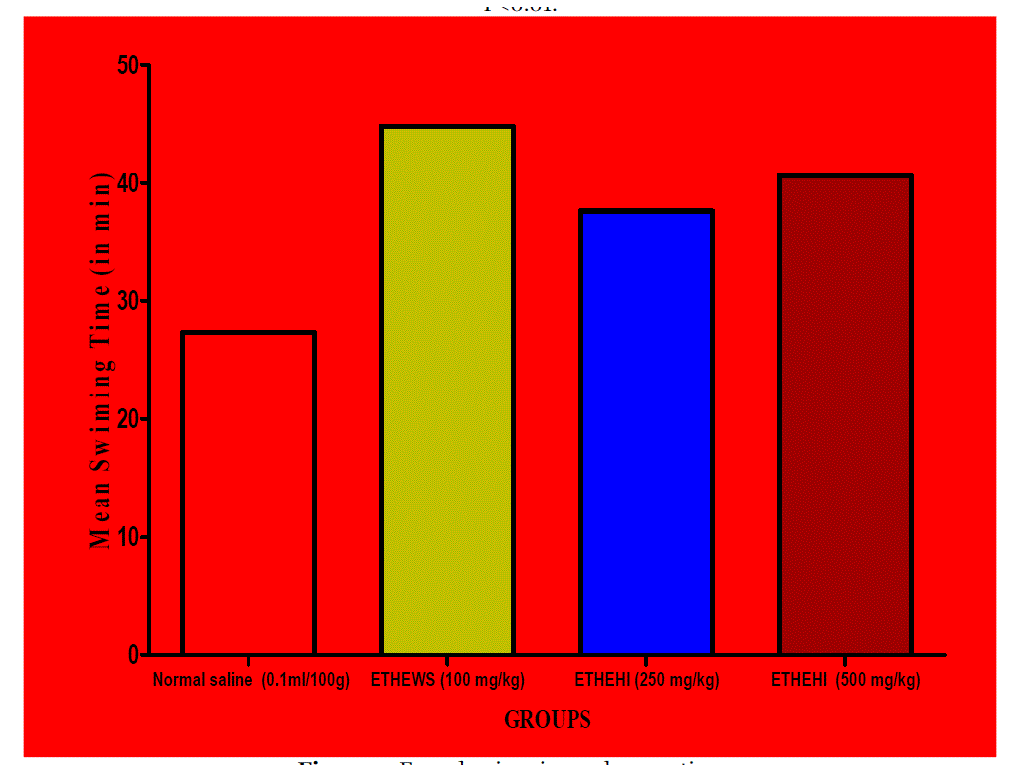 |
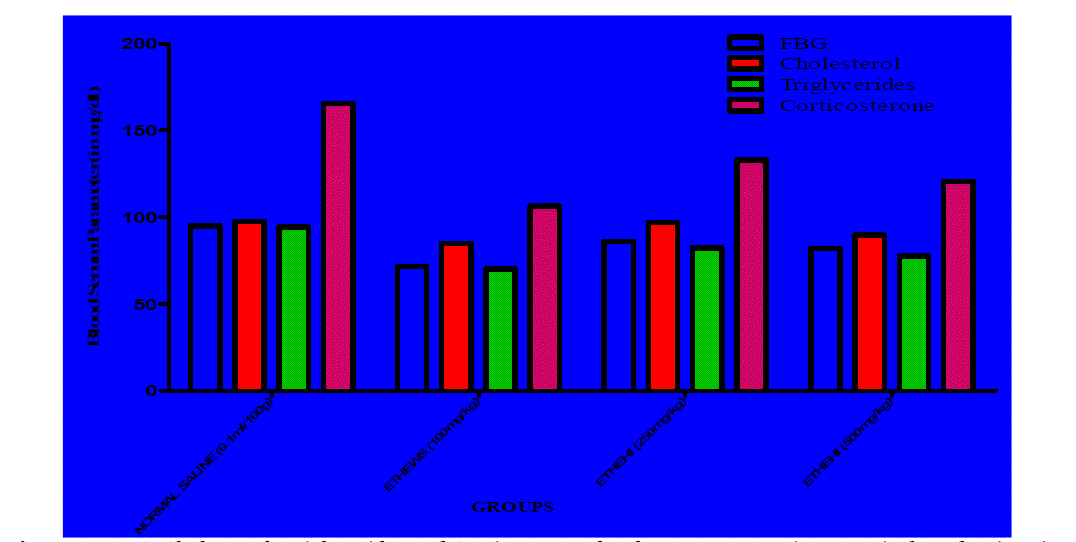 |
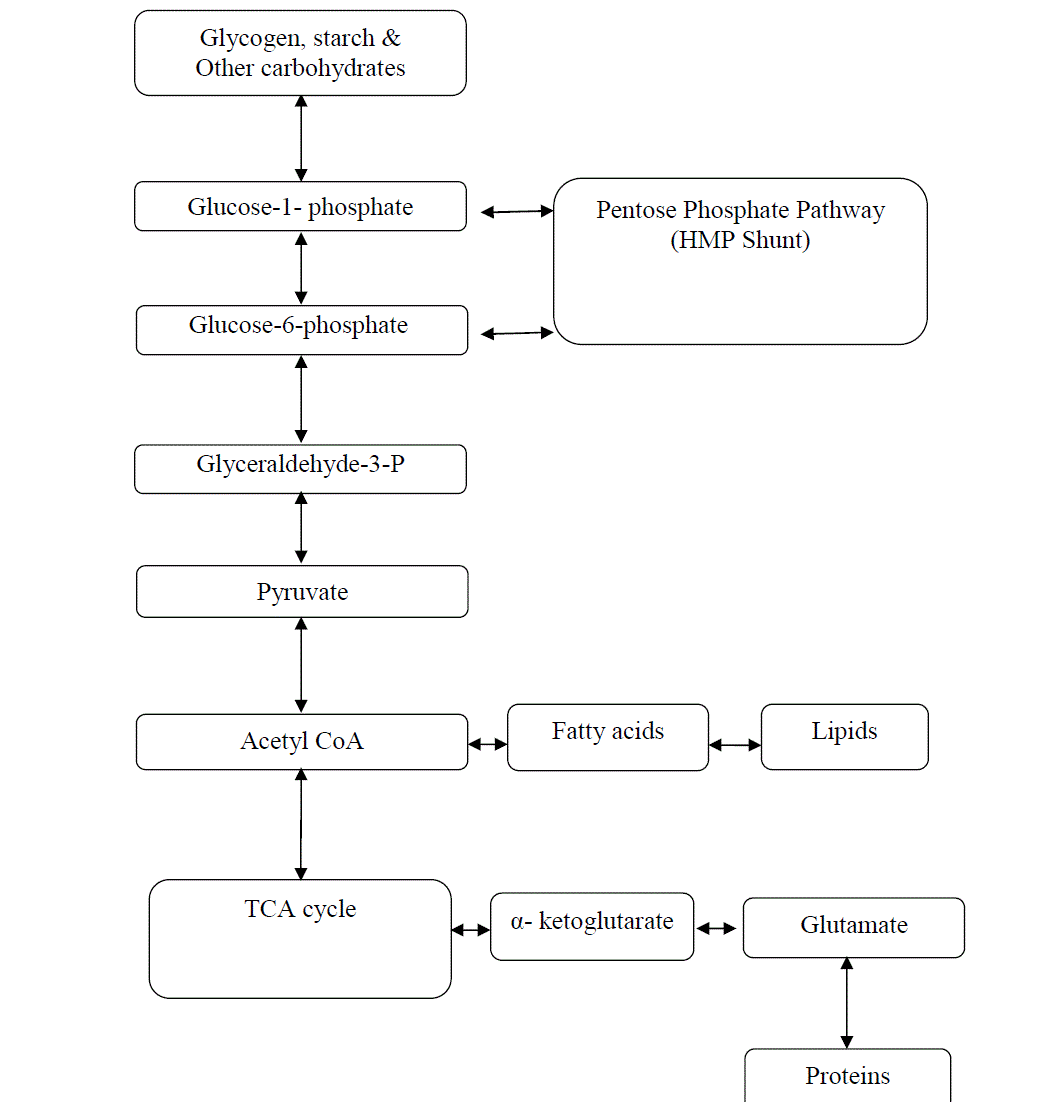 |
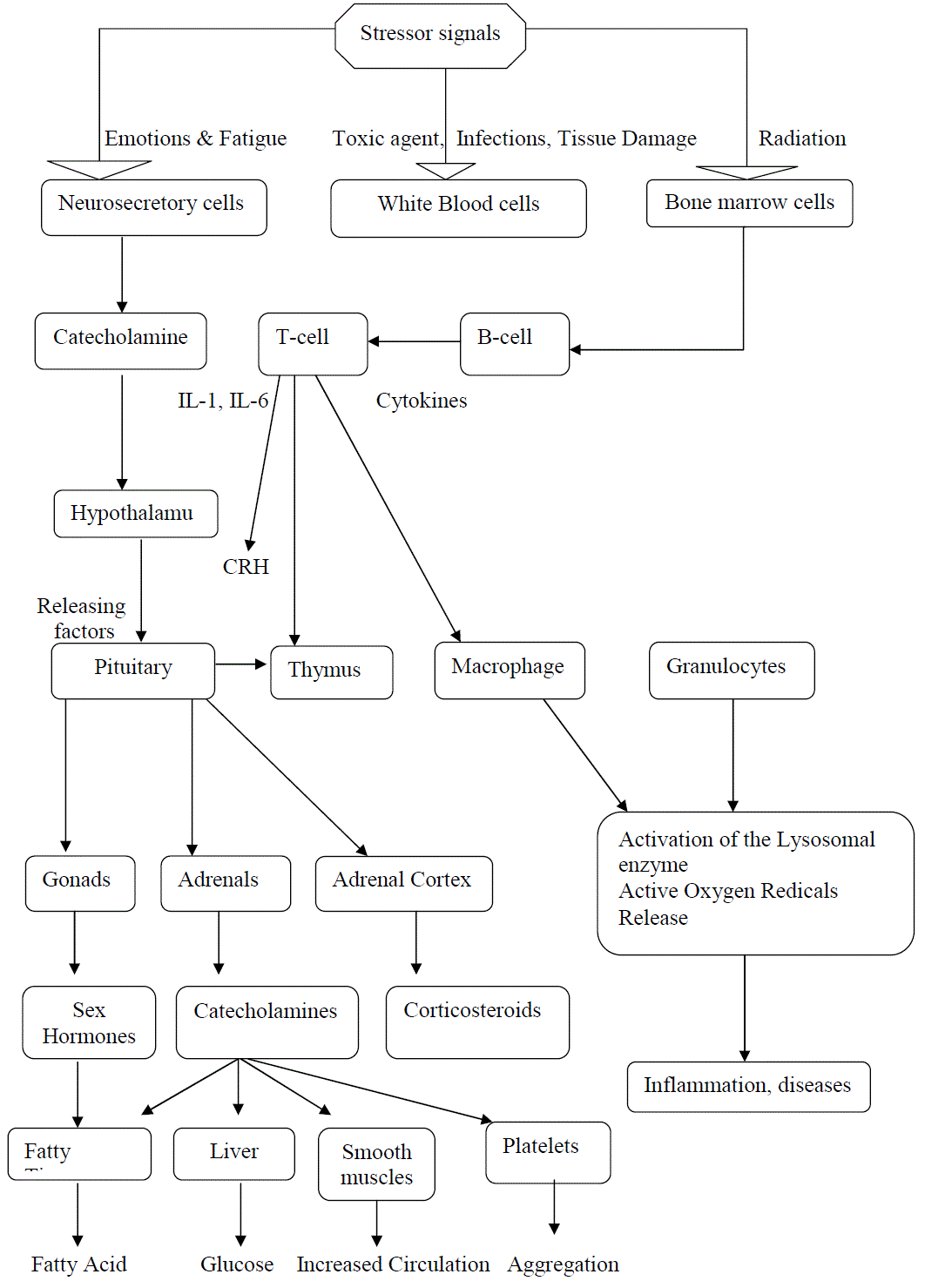 |
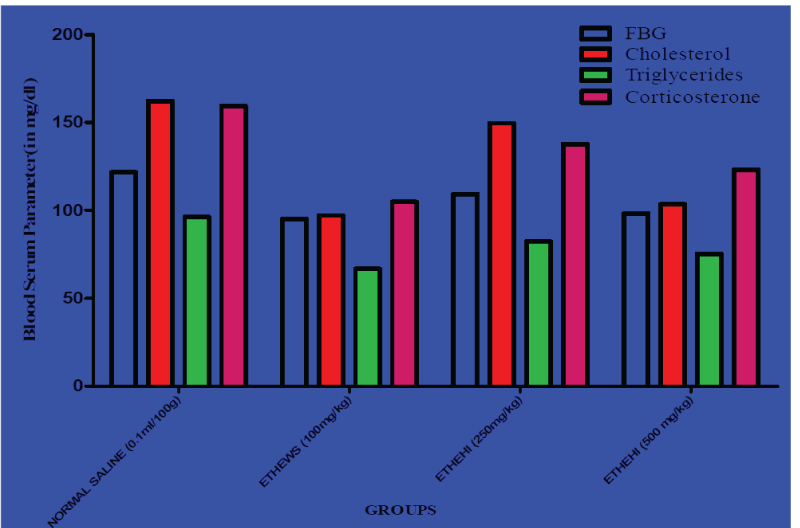 |
| Figure 1 |
Figure 2 |
Figure 3 |
Figure 4 |
Figure 5 |
|
| |











